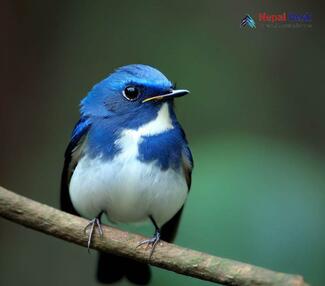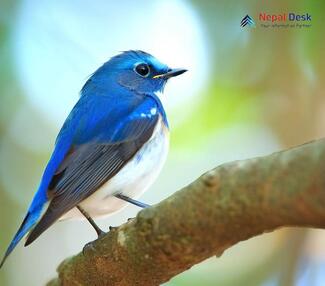The Ultramarine Flycatcher is a small, eye-catching bird that dwells in the mountainous regions of Asia, captivating birdwatchers and nature enthusiasts alike. With its vibrant plumage and agile movements, the Ficedula superciliaris has become a symbol of beauty and grace in the avian world. In this article, we will dive into the fascinating world of this remarkable species, covering information about its habitat, behavior, and conservation efforts, with special attention given to its presence in Nepal.
Habitat and Distribution
The Ultramarine Flycatcher primarily inhabits montane forests across Asia. Their distribution range stretches from the eastern Himalayas through India, Bhutan, and Nepal to parts of Southwest China. Altitudes between 1,500 and 2,700 meters above sea level are their preferred dwelling locations, particularly during breeding seasons. The dense undergrowth of these regions provides ideal nesting and foraging grounds for these tiny occupants.
Physical Appearance and Behavior
Measuring 11-12 cm long with a weight of around 6-8 grams, the Ultramarine Flycatcher is a true gem in terms of physical beauty. Males exhibit striking blue plumage on their upperparts, while their underparts feature orange hues. Additionally, they showcase white "eyebrows" that intensify their striking appearance. In contrast, females possess a more subdued palette of grey-brown shades with dull orange underparts.
Adept at catching flying insects mid-air, these birds display an astonishing level of agility in flight. They are also known to glean insects off foliage during their search for sustenance. The primary diet of the Ultramarine Flycatcher consists of small insects such as flies and beetles.
Presence in Nepal
Nepal boasts an impressive array of biodiversity, making it a haven for birdwatchers. The Ultramarine Flycatcher can be found in several locations throughout the country, including Shivapuri Nagarjun National Park and Langtang National Park. The best time to spot this captivating species in Nepal is during the months of April and May when they arrive for breeding purposes.
Conservation Efforts
While the Ultramarine Flycatcher is classified as a species of "Least Concern" on the IUCN Red List, it's essential to maintain vigilance regarding its conservation. Habitat loss resulting from deforestation, climate change, and human pressures might affect population numbers in the long run. Educational initiatives and ecotourism projects can contribute to raising awareness about this striking species, helping to ensure their continued presence in the rich tapestry of Nepal's biodiversity.
In conclusion, the Ultramarine Flycatcher (Ficedula superciliaris) is a visually arresting bird that has secured its place in the hearts of nature enthusiasts around the world. Its enchanting presence in the forests of Nepal is an excellent example of Asia's unique and diverse avian life. By continuing efforts to conserve and protect these precious habitats, we can ensure that future generations have the opportunity to marvel at this exquisite creature as well.




